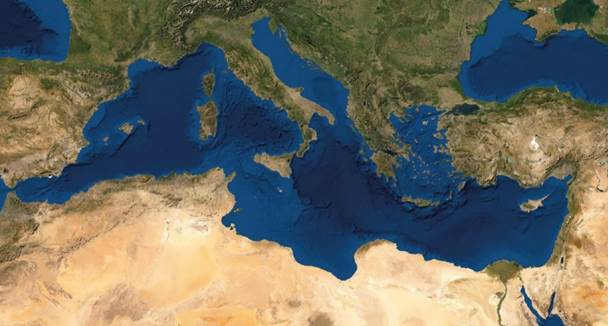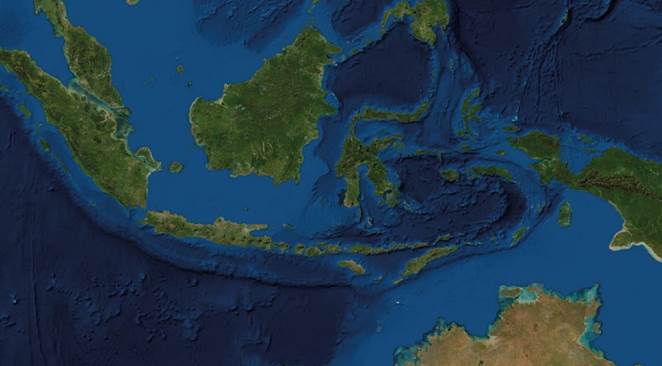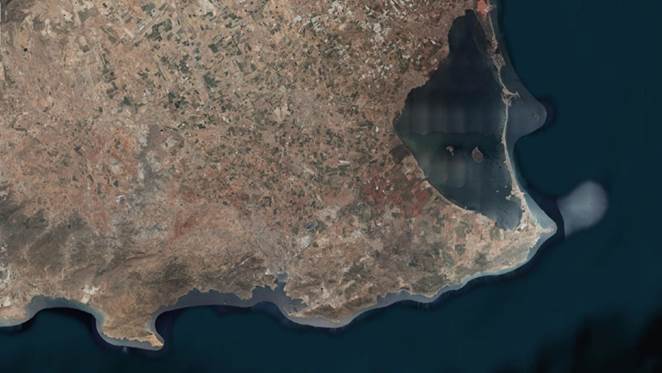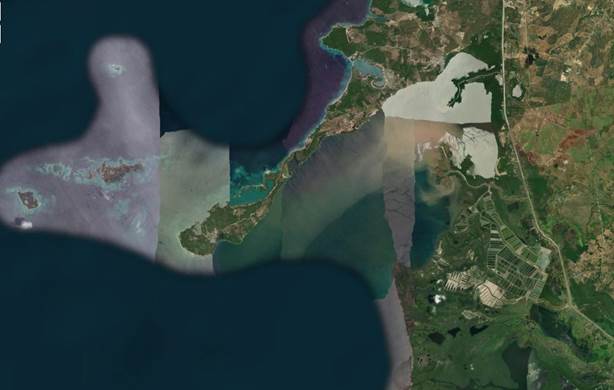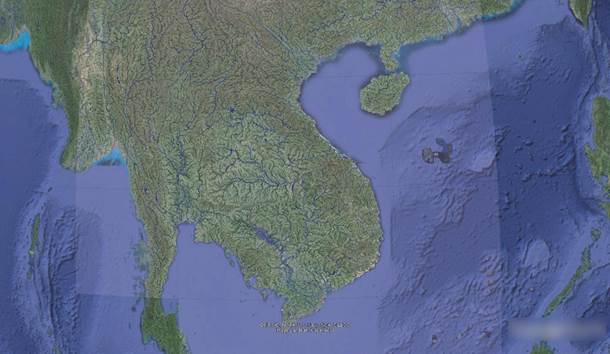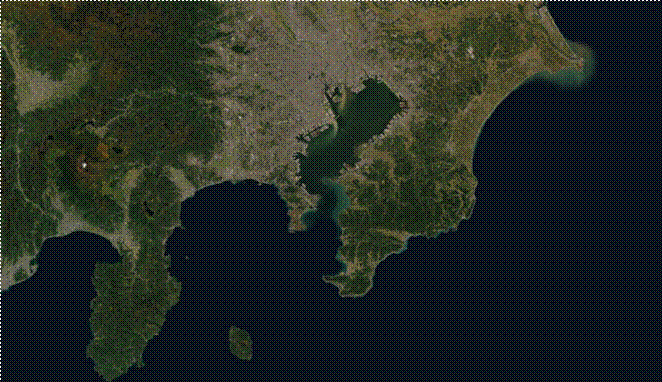Introduction
Investigations to identify the foundations of our crises and climatic drifts have spanned all fields and approaches concerning the management of our environment. Different modes of analysing Gaia have been revisited, apart from its extractivist goals which have guided human interest since our first globalization era (Ramos, 2010). To rethink the acquisition of knowledge necessary to support Gaia, beyond current environmental imperialism (Frame, 2021), and ventilate timeless practice and customs of our anthropization, inquiries through hybrid land and sea spaces - the maritorium biotopes - are recently being explored anew.
While this holistic environmental consideration is promising, it nonetheless raises concerns about the imposing absence of maritorium studies within the Built Environment fields since Fernand Braudel’s revolutionary shift regarding the Mediterranean. Although Braudel enabled cultural landscapes to be surveyed as part of maritime logistics and linked territories that were hitherto considered disconnected, he apparently failed to stimulate cultural geography studies at the very heart of marine spaces.
Current enthusiasm for these hybrid biotopes is proof of several upheavals in the study of living organisms.
It embodies recent criticism of the colonialism of knowledge based on Eurocentric nature/culture conceptions, expressed for instance through the renewal of environmental ethics in the Nūsāntara biospheres in Southeast Asia. In Spain, pollution of maritime spaces is being revisited since land uses and policies are proving flagrantly incapable of integrating mutual aid between these interdependent ecosystems. Also, aqueous ecosophies promise to re-evaluate politics and the governance of territories such as the Colombian Caribbean according to indigenous management and adaptation of life to their milieu. National political ecology is embarking in considerable nature-based adjustment to redefine human settlement resiliency, in a country such as Thailand, according to hydrological biotopes, to the extent that culinary culture and diplomacy concerning seafood products have reversed the very foundations of human settlements like Tokyo.
Yet, with an exponential rise in summits calling for the know-how of autochthonous and indigenous cultures to be renewed in those intangible and difficult-to-capitalize environments, how truly innovative is the reformulation of maritoriums when centuries of logistics in oceans and rivers have already benefited from such knowledge? The purpose of this research is an attempt to testify such ambitions and furnish the built environment with expertise, new epistemologies, ontologies, and action insights.
2. Methodology
Braudel (1995, 2002, 2011) provides a kind of apprenticeship for our assumptions, for the Mediterranean analogy in the East, by virtue of the attempts of his historiographically known followers, which today we would label Eurocentric and rigidly structuralist. Sutherland (2003, p.11) insightfully dissects Braudel’s contributions concerning the Orient in the book “The Mediterranean and the Mediterranean World in the Age of Philip II” (Braudel & Reynolds, 2011): breaking history down into different layers (geographical, social and individual) or, alternatively, dividing man into a multitude of selves. This brings together the structural aspects of the Mediterranean (Figure 1) and the anecdotal side, always in the long term, which is so typical of this French historian. Thus, thinking of the Orient from Braudel’s point of view has been historically problematic in that it introduces the notion of time and space and the reconciliation of the mutual influences between the internal and the external. The result, after decades of debate, has been a conceptual obscuration despite the undoubted contributions accomplished.
Moreover, enhanced by the COVID pandemic, which has enlightened nations such as Singapore, Malaysia, and Indonesia about their dramatic globalisation dependency (in terms of environmental, economic, and social capital), studies and projects are reappearing en masse to revitalize the circular economy, showing solidarity with regions which had so far been ostracised. Thus, maritime regions such as Southeast Asia are currently coming up with multiple research and aquaculture implementations to increase responsible seafood production (Ang, 2021). Such a reinforcement of ancient political ecology denotes a Re-Orient movement (Engelbrecht, 1999) achieved by the empowerment of indigenous populations and the application of their environmental ethics. This major upheaval in terms of applied ethics or mutual aid resonates with new epistemology that has been emerging for several decades.
These cases help us to problematize the discursive transitions of each State. Their discourses usually exclude local ontologies and ecologies from the planning and normativization of the oceans, almost always due to the interest of the States in controlling and submitting ecosystems and their inhabitants to the logics of ocean commodification (Márquez, 2022). These cases show the restructuring of norms and the exercise of authority over management, access and use of marine ecosystems built into the logic of blue growth, almost always based on social injustice and ecological conflicts (Bennett et al., 2021).
Within this framework, four stages are followed:
A critical review of Braudel’s historical considerations based on the bibliography of his most current continuators such as Wallerstein and Moore. On this basis, an interpretative reflection is constructed, not forgetting the limitations that this way of proceeding with history entails.
Definition of analysis categories comparing the notions of bioregion, planning of the built environment and territory with maritoriums. The maritorium describes a comprehensive capacity of social and ecological systems articulating complex dimensions that the concepts mentioned above cannot cover.
Selection of empirical cases in various maritime locations around the world showing that the hypotheses which transpose Braudel’s Mediterraneanness are still valid and admit the notion of maritorium. Given that this notion was born in precise geopolitical conditions, this article is the consequence of carefully choosing other geographical situations which, despite having a comparable problem with their maritime ecosystems, have not (sufficiently) culturally developed the potentiality of the main concept of this research. These cases have focused on returning to the Mediterranean in the Spanish case and finding concomitances in Colombia, with which it could share some cultural keys, and in two very different Asian locations: Japan and Thailand, to insert in them the idea of maritorium, also considering Braudel’s extension of Mediterraneanness and the possibility of bringing to land the deterritorialisation that the maritorium provides.
In line with the idea of maritime territory, which lacks measurability, the figures illustrating this article aim to break away from conventional cartographic notions, stripping the maps as bare as possible and prioritising the presence of the seas.
3. Conceptual guidelines
3.1. Bioregion, reciprocity, mutual aid
Bioregionalism, which can be expressed as a place of life or territory of life, (Schroeder, 2000), belongs to a discursive and controversial field with decades of development, calling for well-specified terms of use when invoked in our assumptions as a key element in the evolution from a dominant and merely administrative state of organisation based on territory to a self organised and co dependent form such as the maritorium. To this end, it is important to understand that concepts of great academic excitability are used seeking to rescue original meanings that have been lost. Kropotkin (2017), for instance, always alludes to human existence as coexistence very early on. Obviously, this Darwinist is limited in his actualisation, but his prescience in seeing life as unfixed, and as involving cooperation and reciprocity rather than mere competition for subsistence, potentially connects with the definition of bioregion and conveniently qualifies the sense we wish to convey upon maritorium.
The fundamental critique of the bioregion concept lies in the difficulty of changing mentalities, as Guattari very promptly states in his latest book “Chaosmosis” (1992), where societies - advanced societies, in the sense of high energy and resource consumption - are not willing to take a step backwards. Therefore, our firm commitment to insert in our societies the anarchic notion of ecosystemic mutuality, in the understanding that it is impossible to measure the sea (recall here the drawing of the measurable blank rectangle of sea at the beginning of Lewis Carroll’s The Hunting of the Snark in 1876), would provide a framework of resistance or, at least, of slowing down in order to generate the necessary time to gestate societies in transition, which are more prone to a change of mentality. And we believe this is necessary because, from Guattari’s critique to the present, as recently argued by Swyngedouw (2021), climate knowledge is mobilised in a post truth discourse which obscures what shapes the climate problem and, consequently, the environmental gaze is confined to a fetish, ensuring that nothing really changes. Moreover, the pervasiveness of the climate crisis debate results in a widespread depoliticization of society at large. As Braudel said, “nature matters” (2011) and ecological dynamics interact with socio ecological space, then and now.
3.2. Maritorium: Unravelling the unknown
Today, maritorium is a transdisciplinary notion as well as a perspective that allows an intention of territoriality to be enunciated from the sea. It was first coined in the 1970s to refer to the inland sea of Chiloé in Chile (Álvarez et al., 2019), which is characterized by housing a historical settlement that has given rise to a socioecological system in which sea and land compose an interspace. Chilean architects used it broadly to describe problems in which two or more rationalities of habitation were in collision (PUCV, 1971), in the midst of a very complex process of coastal planning where the State was unaware of the cultural and ecological richness of the region. Thus, the Chiloé archipelago emerged as an initial reference to formulate the concept of maritorium meaning the sea transformed daily and through different and historical appropriations into a territorialized sea (Álvarez et al., 2019). In addition, it is also suggested as a term to complement studies on maritime archaeology - a cultural hybrid as in the current Baltic Sea (Wehlin, 2013).
By way of comparison, blue ecofeminism could come close to this presupposition that maritorium proposes, since it brings together the issues of the environmental crisis and the care crisis. Both concepts critically analyse capitalist, patriarchal and colonial dogmas and bring beings into dialogue in a relationship of non-domination for exploitation. However, it is the key element of intensification by de-territorialisation that interests us, since it would succeed in undoing all these dogmas through a re-foundation. This is why Deleuze claims the initial “D” in De-territorialization to be absolute, since it over-codes the “T” in Territorial and conjures up new lines of flight that cannot be reconfigured, or so we hope, to repeat past errors by reintegrating subversions.
In synthesis, there is no closed definition; rather, it is a spectrum that, in general, seeks to express the complex ways of life that the sea makes possible, the systems of use of local communities who are in connection with the tides and all the hydrobiological resources the sea provides, who live on/with it in their boats that are an extension of their homes. The maritorium perspective refers to a transitional and non-disruptive understanding of social and ecological systems; it seems to dispense with the boundaries that have conventionally been imposed on territory in the continent (Gottberg, 2020).
The following chapter sets out the applied hypotheses of this research, using an aqueous atlas to confirm that various geographically distinct locations could provide the opportunity to use the idea of maritorium sensibly. The idea is to explore how Spain, the Colombian Caribbean, Nūsāntara, Thailand, and Japan could renew their ecosophies based on marine studies.
4. Discussion. Aqueous atlas
4.1. Nusantara: Rewilding thalassocracy?
An empire of multiple appropriation, the maritime Southeast Asian territory named Nūsāntara spans Indonesia, Malaysia, Brunei Darussalam, Singapore, and southern Thailand. This territory enables us to embrace the entire biosphere dynamics of a region where aqueous space represents more than half of its surface area. With “Nusa” meaning island and “Antara” meaning in-between or included, Nūsāntara is translated from ancient Javanese as “outer islands” and refers to the global entity of the region (Ladiqi et al., 2019). While the Javanese kingdoms of Singhasari and Majapahit (12931527) spread and made their glory from trading spices across the seas, Portuguese, Dutch, and British colonial territorialization discredited these vital spaces to focus on terrestrial exploitation and gradually forgot such biotopes, despite constituting the regional thalassocracy. Today, following subaltern studies, a critical analysis of Western hegemony over regional planning led to considerable ontological shifts such as Jakarta’s relocation according to indigenous concepts - Nagara Rimba Nusa - by innovative local planners such as Urban +.
The connected social ecology of the region denotes the interculturality and porosity of the maritime atmospheric design, just as it would in F. Braudel’s Mediterranean Sea expressing the similarities of cultural productions around this vortex of knowledge where customs and practices interpenetrate and merge.
Recent cultural acknowledgment to strengthen the cohesion of social ecologies such as the Moken, OrangLaut and Sama-Bajau’ Sea nomads (Gaynor, 2005) refers to a worldwide Future Indigenous Movement aiming to re-anchor autonomous economies within their own biotopes. While the concepts of Western Nation-States (1920) and Western Urban Planning (1919 in Japan) implemented through terrestrial footprints have caused similar culture/nature disconnections, the economies of Nūsāntara are still struggling to claim their own model. Accordingly, in the major economic hub of the region that is Singapore, the natural biospheres of maritoriums are notoriously unknown to local inhabitants. Recent marine studies have shown boosted interest (sea farms) and yet are being re-exploited seeking regenerated extractive aims. Concern regarding the devastation of the indigenous cultural landscape and protected forest in the region based on such new interest for those areas (Tacconi, 2019) refers to similar issues that arose recently within the green capitalism drift.
Will interest in Nūsāntara (Figure 2) have time to avoid its environmental gentrification and formulate other modes of consideration that would prevent this craze from hastening its end? And how can the drifts and pollution in the heart of old Europe serve as guidance?
4.2. The Mar Menor conjuncture
The Mar Menor (Figure 3) is the largest saltwater lagoon in Europe, with a surface area of 170 km2, 73 km of coastline and a maximum depth of 7 m. It is located on
the Mediterranean coast of Spain, in the region of Murcia. Inside, there are five small islands of volcanic origin. The current shape of the lagoon is due to the marine currents that have been dragging and depositing sand and sediments on the coastline during the Quaternary (from 2.6 million years ago to the present day), giving rise to an arm that partially closes this bay known as La Manga, allowing the water to be renewed through gullies.
Despite a very high degree of environmental protection, it is a shamefully mistreated ecosystem. The social pressure (forcing the European Commission to take action in the face of ineffective local governments) exerted after successive mass deaths of marine fauna due to pollution, mainly from agricultural runoff, is beginning to de-territorialize the areas surrounding the lagoon. In this case, where the notion of insularity does not refer to land surrounded by water, but to water surrounded by land and its agents of exploitation (intensive metal mining and the explosion of urbanisation and tourism, submarine sewage collectors, brine from desalination plants for agriculture, microplastics, oily films, etc.), the enormous problem of the relationship between land and sea serves as an example to the whole Mediterranean by extension due to its singular delimitation.
As the results of the socio-spatial dynamics are clearly visible, responsibilities cannot be denied in the posttruth framework and, according to the Similarity Theory in physics, we can say that this scale model reveals the reality of the Mediterranean, which still hides evidence of the same process of degradation. Braudel used the term conjuncture to differentiate from a spatial-temporal understanding due to its structures, highlighting nvironmental determinations without slipping into environmental determinism (Moore, 2003) and, therefore, to show that natural history and social history are never static conceptions.
If we think of the Mar Menor lagoon according to this term, it must be admitted that the list of threats we have indicated above are not fundamental keys, but subsidiarities of a time where the world-economy (or the world-system in Wallerstein’s updating of Braudel, 2004, pp. 15-18) requires unveiling mechanisms. For this reason, embracing the concept of maritorium means nothing more than taking on the appropriate dimension to tackle the serious consequences of environmental indifference.
The importance of this ecosystem is best understood according to the legal status it has recently achieved. This would suggest that the sea has achieved that status rather than someone granting it, and the Mar Menor wants to be consistent with that achievement: having become Europe’s first ecosystem with legal personality, just like people or companies, which establishes a system of legal guardianship for its representation.
4.3. The Colombian Caribbean: Diffuse boundaries
In the Colombian Caribbean, the enunciation of the maritorium occurs at a particularly controversial political juncture. The dominant narratives construct the present as a moment of transition: from the sea as infinite space and a territorial reserve of the State to the sea as a natural resource available to encapsulate in discourses on sustainability. On the other hand, the claim for an inhabited sea, a populated sea, shapes a narrative that places the peoples of the sea at the centre, alongside Colombia’s historical relationship with the Greater Caribbean (Ivelic, 1971) and the search for recognition of the sea as a space of encounter, identity and roots. Barú is a peninsula of Cartagena de Indias in Colombia separated from the mainland by the Canal del Dique which was built in various periods since 1575. According to the categories of legal and administrative order of the State, Barú is an island. It is characterized by being populated mostly by Afro-descendant populations of former palenques and rochelas who have built forms and livelihoods based on fishing, agriculture and, more recently, tourism. Since the 1980s, various conflicts have been taking place in Barú between the native populations and other private and state actors. Almost all disputes are related to the use, distribution, control and access to environmental goods and services in the continental area and in the extensive marine space that constitutes the maritorium of the Baruleros (Figure 4).
From the political-administrative perspective, the way these types of places are treated in the territorial planning of the city is diffuse: they are not so urban to be openly considered areas of expansion of the city, nor are they seen by planners as a rural area with characteristics that exclude them from the real estate market. Paradoxically, Barú is also home to one of Colombia’s most important protected areas, the Corales del Rosario National Natural Park, which today covers 120,000 hectares. As in other parts of the Caribbean, given the ecological fragility of the coasts and coral reefs, Colombia has been designing sustainability policies, the most important of which involves creating marine protected areas and delimiting navigation lines to preserve coral and seagrass ecosystems.
However, many of these sustainable policies have negatively affected the local populations that inhabit the sea, who now face regulations that tend to exclude artisanal fishermen and sailors (Márquez, 2019).
According to Bolaños et al. (2020), the Caribbean Island of Barú is claimed by an Afro-descendant community that had inhabited it since the 17th century when runaway black slaves founded a palenque or sovereign territory.
In the words of Braudel, which we have used to understand this area, “to draw a boundary around anything is to define, analyse, and reconstruct it, in this case to select, indeed adopt, a philosophy of history” (2011, p.18), which also applies to the following cases.
4.4. Thailand: Nature-based adaptation
Thailand’s coastal areas are rich in biodiversity, marine life, aquaculture and mangroves. The country lies in the monsoon region, which is highly exposed to extreme weather phenomena (rising sea levels, flooding, cyclones and coastal erosion). Thailand’s coast plays important roles in terms of agriculture, fisheries, aquaculture, nursery areas for marine life, natural resources and tourism. Increasing impacts brought about by climate change have put stress on marine and coastal environments. To address this issue, the country has recently been working on building resilience to climate change impacts in marine and coastal areas along the Gulf of Thailand to reduce the risk of disaster and enable adaptation and mitigation. Bangkok, the capital city with a population of 8.3 million, is located on the delta of the Chao Phraya River flowing into the Bay of Thailand and has been vulnerable to coastal erosion due to rapid urbanisation, low lands and climate change. Naturebased adaptation is a climate-responsive and challenging approach to maintain an eco-friendly environment for Bangkok’s coast so as to achieve SDGs for a more sustainable future.
Thailand’s coast has been changing over the last two decades due to shoreline erosion, with the sandy coastline having shifted landward about 10-100 meters in the south (Nutalaya, 1996). Erosion became more severe on the muddy coast of the Chao Phraya River delta, claiming about 1 km over 40 years (Uehara et al., 2010). Its period of rapid economic and population growth obviously began in the 1960s (World Bank, 2018) and built-up residential areas doubled from 181 to 366 km2, while commercial spaces increased from 18 to 61 km2 between 1986 and 2002 (Dhakal & Shrestha, 2016). Rampant urbanisation in Bangkok has resulted in high density of buildings and population, heat emissions, environmental problems and ecological degradation, together with increasing impacts from climate change, leading Bangkok to be considered one of the world’s major flood risk coastal cities (Kiguchi et al., 2021). Bangkok’s location on the mouth of the Chao Phraya River means it is affected by both terrain water and tidal waves, as well as low altitude (2 m above sea level), making the city’s drainage limited. Due to rising sea levels, Bangkok’s inundated areas will predictably increase by 26 % in 2050 (with a sea-level rise of 32 cm) and by 81 % in 2100 (with a rise of 88 cm), as compared to the areas flooded in 1995 (Kiguchi et al., 2021). The Bangkok Metropolitan Administration launched the Bangkok Master Plan on Climate Change 2013-2023 in 2015. Flooding adaptation is prioritised into short-term, mid-term and long-term measures including expansion of retention areas, flood management development, particularly green infrastructure, and eco-system-based approaches (Alves et al., 2018). Nature-based solutions to protect coastal erosion are among the climate resilience measures designed to adapt and mitigate the risk of flooding and coastal erosion (Figure 5). Recently, the Royal Thai Government with UNDP support has worked on a new climate change adaptation project granted USD 3 million by the Green Climate Fund to help Thailand cope with the impact of climate change on marine and coastal areas along the Gulf of Thailand. This is a fouryear project developed by a collaboration between the Office of Natural Resources and Environmental Policy and Planning (ONEP), the Department of Marine and Coastal Resources under the Ministry of Natural Resources and Environment (MoNRE) and UNDP in Thailand (UNDP, 2021). Undoubtedly, nature-based adaptation has been considered best practice to protect Bangkok’s coast and its marine ecology, as with many coastal cities dealing with rising sea levels and climate change challenges looking for a more resilient future.
4.5. Reinstating the Porphyra circular economy
Coastal areas -backshore, nearshore and foreshore- have historically allowed people to develop economically in their communities. However, the reclamation and development of coastal areas for human activity since the early 19th century has dramatically transformed the culture and ecology of the coastline. In the capital of Japan, “ninety per cent of Tokyo Bay’s coastline is reclaimed land, which is almost 250 km2 of new land” (Martín-Antón et al., 2016), destroying the seaweed farming culture on which indigenous peoples built their interrelationship with the sea, and disrupting the balance between the marine environment and the economy of human and non-human stakeholders that had been forged over many years. The relationship between human and non-human stakeholders on the coastline in the post Anthropocene needs to be redefined not only in terms of conservation and protection, but also of a new circular economy.
The natural coastline of Tokyo Bay (Figure 6) developed rapidly to house large factories, markets and critical infrastructure in the 1950s, as Japan experienced a surge in economic growth (Pernice, 2007). At the same time, mass development reduced the natural coastline (tidal flats) from 136 km2 prior to the economic growth period in the 1940s to less than a tenth of its original size, leaving 10 km2 in the 1990s (Kodama & Horiguchi, 2011). Classifying these natural coastal areas in Tokyo Bay into subregions of backshore, foreshore and nearshore reveals marine vegetation habitats that have been lost due to landfill development.
The nearshore, depending on seawater clarity, houses habitats where photosynthetically active radiation reaches the seabed in sufficient quantities to allow seaweed to photosynthesise. This means that seaweed habitats have been lost from Tokyo Bay due to land reclamation. In particular, the Porphyra genus (known as nori) has been farmed from its natural habitat in Japan for 7000 years (Miyashita, 1970) and its industrial history was established around the 18th century, including a large cultivation area in Tokyo Bay.
The impact of this development and loss of habitat has affected fishing businesses. The number of fisheries, including seaweed farms, declined rapidly between 1968 and 1973, and in 2018 fell to about one seventh of its number in 1958.
Since the 1960s, Tokyo Bay has become highly eutrophic, with excessive phytoplankton blooms leading to hypoxia (Sakamoto & Shirakihara, 2017). It is clear from the facts outlined here that in the last twenty years the coastal areas of backshore, foreshore and nearshore that Tokyo Bay has lost since the 1950s have been transformed ecologically, culturally and economically. Bringing back 136 km2 of natural coastline would not be realistic for Tokyo Bay today, but reviving seaweed farming would lead to a more autotrophic ecosystem than wild seaweed as it is harvested for seafood products, eliminating oxygen-consuming recalcitrance in the ecosystem. Laver farming provides an oxygen-rich habitat and a refuge for marine organisms from low oxygen and a refuge for marine organisms from low oxygen levels (Duarte et al., 2017).
As we can see, it has taken a major crisis in our environmental management models for us to finally accept the reversal of knowledge and assumptions around the world. The destruction of human and nonhuman habitats, biodiversities and cultures linked to the liquid environment has become so tragic that it calls for a renewal or reversal of ecological acting. Therefore, it is now necessary to reconsider and apply the liquid environment culture developed in the Anthropocene, fostering a better balance between human and non-human, microscopic to global-scale aqueous environments.
5. Conclusions: liquid prospects
5.1. Aquæthics
The potential of applying research ethics to the aqueous environment has undoubtedly given rise to the most stimulating and disturbing panarchy at the heart of the current ecological imperative. This requires us to rapidly formulate safeguards on ancient knowledge that has already proven itself, to stem those who would use it as a green capitalism platform rather than challenging equity. Just as queer ecology disturbs the dominant ecosophies, such resilience dynamics are expected and must be strongly accompanied by convincing pedagogy and governance from our side.
5.2. The viable conjuncture
As in any quest for equity, the way it is triggered starts with an imbalance, pushing in the opposite direction. Even on a speculative level, such a reversal achieves great success. As the notion of territory already possesses inertial tensions that are impossible to stop, it would be a matter of counteracting acceleration in the initial phases, with an understanding of marine dynamics on land. Perceiving the environment, like a swimmer in the sea - labile, cold, wet, uncertain, immeasurable, changing, powerful, non-anthropogenic -, would entail a mutually supportive relationship abandoning the modern domination of nature. In subsequent phases, particular achievements, such as the examples developed here in the case studies, could be adapted in new transitional societies.
5.3. Culinary revival
The revival of seaweed farming in Tokyo Bay has the potential to bring about additional benefits: In the 17th century, cultivation near large cities provided supplies close to the end market and reduced transport costs (Woessner, 1981). This could be applied in a carbonneutral way in Tokyo, where modern marine products are not produced and consumed locally. It would then be possible to develop a new circular economy around seaweed farming (improving the marine environment for tourism, boosting local marine products and natural treatment of urban wastewater). Seaweed is consumed in most parts of the world and is used not only as food but also as a medicine and in other industrial products (Whistler & BeMiller, 1973).
5.4. Inhabited sea
Learning from areas such as the Colombian case which we have discussed here -because neither the Caribbean Sea of Barú nor the Greater Caribbean can be considered wastelands-, the notion of maritorium prevents the sea from being enunciated as nobody’s space; it never has been. In contrast, seeing the Caribbean as a maritorium implies thinking about the cultural, economic, historical, ecological and political forces that constitute it (Grossman, 1998). The matter of whether there is a right to the sea, whether it is a fully recognized right or whether it is just a mere expectation cannot be a field of continuous interpretation. It would be sufficient to recognise the current practices of use, navigation and significance of the peoples who live in the sea and with the sea (for them, there is nothing that separates the ground from the sea: The sea is their home). The scientific community leading the Ocean Decade declared by the United Nations (2021-2030) could further leverage ocean sustainability, for example, by addressing issues such as ocean grabbing and practices involving privatisation of common goods linked to coastal ecosystems. There is growing literature in the English language on the nonlinearization of the oceans, which in recent years has begun to address the concepts of blue grabbing or ocean grabbing (Márquez, 2019).
5.5. Long time no sea
Almost four decades have passed since the death of Fernand Braudel. The obsolescence of the Annales school, the crisis of postmodernism, the crisis of criticism, the neglect of theory and thought, the economic and pandemic crises, negationism and post-truth... All of this, in view of its consequences, now sounds frivolous, superfluous, self-serving. Every era dreams of shaping its time, of bending it. Our present is perceived as clusters of space times (both material and imaginary, at once social and rabidly individual) folded by n dimensions that intertwine and bend back on each other in a way that is as irreducible as it is unpredictable and enigmatic. This is the metaphor of the sea, seeking to move from poeticising to action. Braudel is no longer here, but his ramifications remain. Tracing them backwards like Ariadne’s thread would necessarily mean going forwards, bypassing the labyrinthine oppression and focussing all efforts for the transition towards fairer societies. Drawing on recent academic interest in Braudel’s reflections on the Asian Mediterranean from Spain to Japan, our case studies adopt similar migration routes to reach meanings and proposals at different levels of local resolution, but also, speculatively, to imagine scenarios that oppose neoliberal inertia.
Presently, the triumvirate of civil society, public and private sectors finally seems inclined to reassess these forgotten spaces for which international and regional communities are committed to being accountable. The globalisation (i.e., transfer) of knowledge, coupled with better environmental burden visibility (following renewed ecological democracies) enables a shift from guilt to a committed and reasoned ecological resistance. Because a period in territorialization history would seem to wear itself out, it is crucial to go beyond the concept of terra nullius, which has been the environmental imperialists’ adage claiming the improvement of spaces empty of cultures and knowledge. As well as to thwart the figure of Cain, the terrestrial farmer who formalized land capitalism in Western Christian and Protestant cultures and would become the model for extracting wealth from our planet to the obscurantist perception of marine spaces from civilized lands.
Following the 2012 Nagoya Protocols (art. 12) claiming the revitalization of autochthonous practices and customs to empower indigenous futures, maritorium regenerative engineering is currently fuelling a vast range of acknowledgment engines: in politics, such as neo-marine governances; in life science, with a new environmental anthropology of maritorium communities; in pedagogy, revisiting the geography and human science of the marine scape; and in economics, with novel trading models. It is a colossal task that renowned institutions in Colombia, Japan, Singapore, Spain and Thailand can lead, having very recently actively deployed exponential initiatives to regenerate such expertise toward new generations disillusioned by exogenous models.
The environmental ethics of the reappropriation and maintenance of maritoriums by native and legitimate communities disseminates spirituality, and its conscious design supports our claim. We will now have to accept no longer being thinkers of a nondescript meta-modern narrative of biospheres that escapes our narrow minds, and that insensitivity has compromised the sustainability of the major management of our planet.
This research, expanding on a globalization from the grassroots inquiry into the fluctuating, porous and continuous exchange operating within maritoriums, attempts to produce a multidisciplinary platform of “collision sciences” to demonstrate how specialisation, information retention and knowledge capitalisation, the stigma of our modern terrestrial expansion, have led to our contemporary torments. The contestations of knowledge that are emerging today, often contradictory and conflicting, sometimes problematic, nevertheless remain life-saving tools of epistemological anarchism making it possible to dismantle questionable but still uncontested environmental nepotisms.
Our proposal based on the idea of maritorium has a transitional logic; it is not substitutive through imposition. Therefore, here, the ontological clash is a purely dialogical construct. It is transformative only to the extent that agonism (in the positive sense used by Laclau and Mouffe) between conflicting parties arises from the will to transform the regulatory system when it comes to valuing current forms of life.
Jules Michelet (1861) stated that “it is by the sea that we begin all true understanding of geography”. Certainly, the constitution of a speculative symbioscene finds its source in the heart of the aqueous milieux.













